Capers
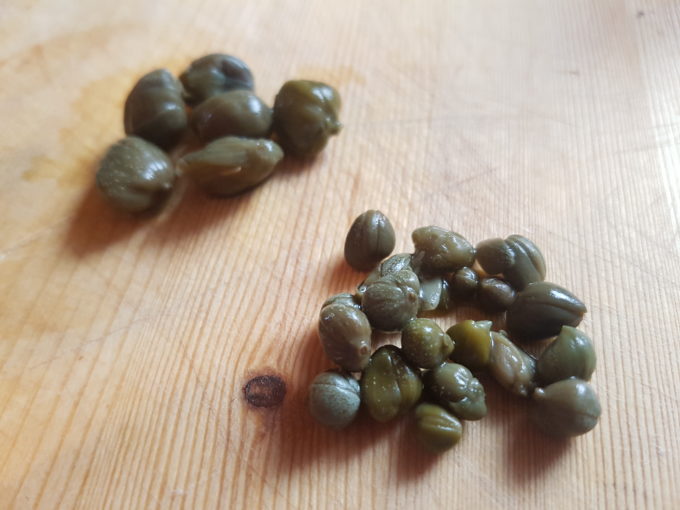
 Ah, Capers! The devious flowers that look like a vegetable but act like a condiment and think they have the right to attend every dish. Actually it’s not far from the truth.
Ah, Capers! The devious flowers that look like a vegetable but act like a condiment and think they have the right to attend every dish. Actually it’s not far from the truth.
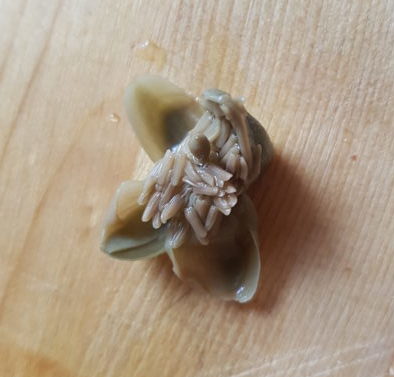
Peeled open pickled caper bud.
Capparis spinosa (AKA The Caper Plant) grows naturally all the way around the Mediterranean Sea, into Eastern Africa, all the way down to Madagascar, and completely across Asia, including the Himilayas, before finally extending south through India and South East Asia, all the way into Australia. Because of this huge window of proliferate existence it is hard to know where it truly originated versus where, perhaps, it was dropped along a trade route. The cultivation for consumption however is chiefly around the Mediterranean, probably lending to those flavors being the most common use for incorporating capers in the diet of other more distant locations.
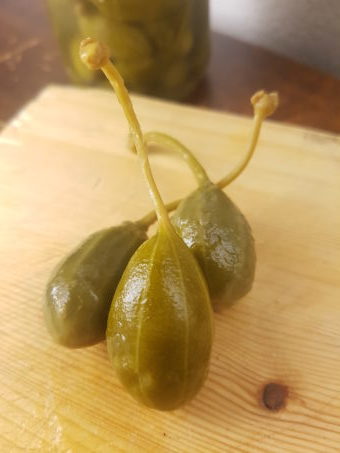
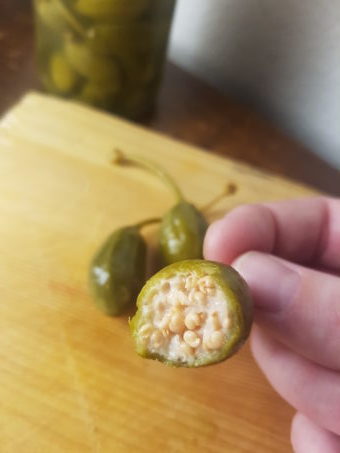
The part of the plant most often consumed is the unopened flower bud, in the form of a salt brined pickle. However, the berries (above) can also be found in such a form. Just a few places, namely Greece and Cyprus, also consume the leaves, and usually brined as well.
The capers you will most often see in stores are labeled either non-pareil or capotes, but there are actually six ‘types’ total, labeled according to their size. Smaller is considered more desirable, and I’m inclined to agree.
- non-pareil (up to 7 mm)
- surfines (7–8 mm)
- capucines (8–9 mm)
- capotes (9–11 mm)
- fines (11–13 mm)
- and grusas (14+ mm)
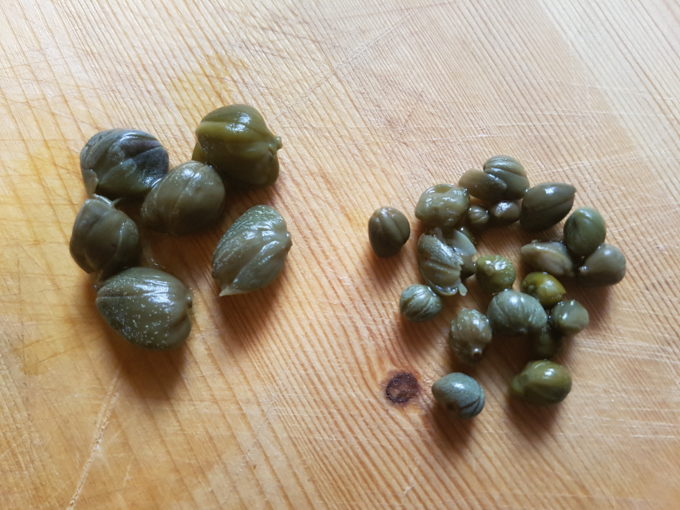
capotes and non-pareil capers side-by-side
Cooking with Capers
In Mediterranean cuisine you will see capers top many easy to eat finger foods, pastas, salads, or meat dishes, and in a variety of sauces, many of which are dressing-like and include some sort of fat and a sour ingredient; very often lemon. (Tartar Sauce, Grenobloise, and Gribiche for a few examples.)
Many of the African Cuisines follow similar stylizing with fish as a very common component, and the capers either topping the dish or part of the sauce. As for Indian Cuisine capers can be incorporated into one of the many chutney options or simply added to a curry.
Last random fact: When making high-quality cheese, some manufacturers use dried caper leaves in place of rennet.
